
Euphorbia pseudoglobosa Photo by: Valentino Vallicelli
Origin and Habitat: South Africa (Western cape. Alt: 25 - 250 m.)
Habitat and ecology: Plant in natural surroundings greatly resemble the surrounding small stones.
Synonyms:
See all synonyms of Euphorbia pseudoglobosa
back
Accepted name in llifle Database:Euphorbia pseudoglobosa MarlothS. African Gard. 19: 191. 1929 et: Muir in Journ. S. Afr. Bot. 1936, ii. 127, descr. ampl.Synonymy: 2
back
Common Names include:
ENGLISH: False Globose Spurge, False Globose Euphorbia
Description: Euphorbia pseudoglobosaSN|14415]]SN|14415]] is a dwarf spineless succulent that looks like a cactus, eventually forming a subterranean caudex (often lifted up into view in cultivation for looks) It forms thick mats of dwarf spineless segmented stems up to 20 cm in diameter.
Root: Tuberous, merging into stem, forming an underground root (caudex) to 8.5 long 4.5 cm thick.
Stem: It forms segmented branches from the caudiciform base which cluster at the tip. Segments globular to elongated, or finger-like (remembering of an Opuntia) 2.2-3 cm in diameter, and 2.5 to 8(-10) cm long, prominently 5- to 6-ribbed. Rib with minute crowded tubercles.
Spines: Absent.
Roots: Tuberose.
Flowers (Cyathia): Unisexual, solitary near segment tips, yellow. Peduncles ca. very short, with a few small bracts.
Blooming season: Winter.
Notes: Euphorbia pseudoglobosaSN|15988]]SN|14415]] sows a superficial resemblance with Euphorbia globosaSN|15665]]SN|15665]] (hence the name) but the the closest related species is Euphorbia susannaeSN|14415]]SN|15988]]. However E. pseudoglobosa misses the clearly curved back tubercles characteristic of E. susannae.
Bibliography: Major references and further lectures
1) Doreen Court “Succulent Flora of Southern Africa” CRC Press, 01/June/2000
2) White, A., Dyer, R.A. & Sloane, B.L. 1941. “The succulent Euphorbieae“, vol. 2. Abby Garden Press. Pasadena, California.
3) Urs Eggli “Illustrated Handbook of Succulent Plants: Dicotyledons” Volume 2. Springer, 2002
4) Hermann Jacobsen “A handbook of succulent plants: descriptions, synonyms, and cultural details for succulents other than Cactaceae” Volume 1 Blandford Press, 1960
5) James Cullen, Sabina G. Knees, H. Suzanne Cubey “The European Garden Flora Flowering Plants: A Manual for the Identification of Plants Cultivated in Europe, Both Out-of-Doors and Under Glass” Cambridge University Press, 11/August/2011
6) Werner Rauh “The Wonderful World of Succulents: Cultivation and Description of Selected Succulent Plants Other Than Cacti” Smithsonian Institution Press, 1984
7) Alain Campbell White, Robert Allen Dyer, Boyd L. Sloane “The succelent Euphorbisae (southern Africa)” Abbey garden press, 1941
 Euphorbia pseudoglobosa Photo by: Valentino Vallicelli
Euphorbia pseudoglobosa Photo by: Valentino Vallicelli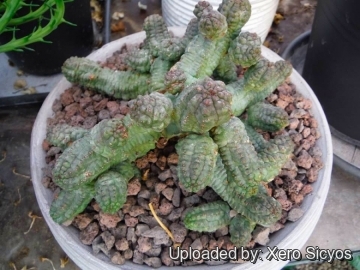 Euphorbia pseudoglobosa Photo by: Xero Sicyos
Euphorbia pseudoglobosa Photo by: Xero Sicyos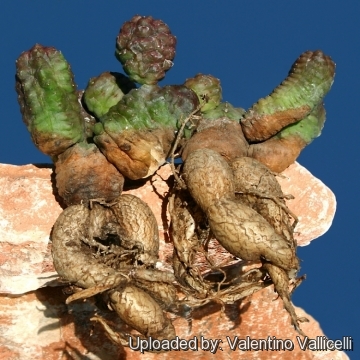 Euphorbia pseudoglobosa Photo by: Valentino Vallicelli
Euphorbia pseudoglobosa Photo by: Valentino Vallicelli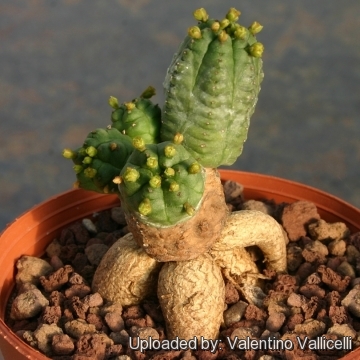 - Composed of odd elongated, segmented fingers off a swollen tuberose root. Photo by: Valentino Vallicelli
- Composed of odd elongated, segmented fingers off a swollen tuberose root. Photo by: Valentino Vallicelli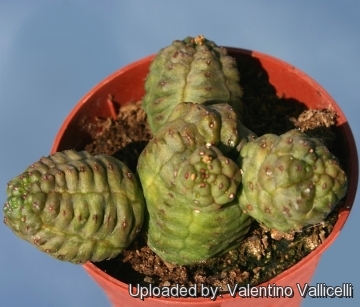 Euphorbia pseudoglobosa Photo by: Valentino Vallicelli
Euphorbia pseudoglobosa Photo by: Valentino Vallicelli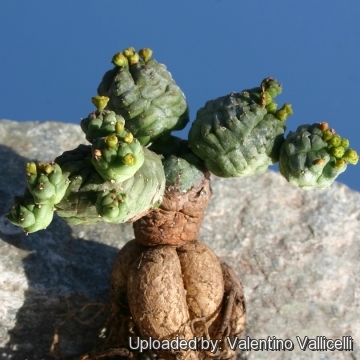 Euphorbia pseudoglobosa Photo by: Valentino Vallicelli
Euphorbia pseudoglobosa Photo by: Valentino Vallicelli Euphorbia pseudoglobosa Photo by: Valentino Vallicelli
Euphorbia pseudoglobosa Photo by: Valentino Vallicelli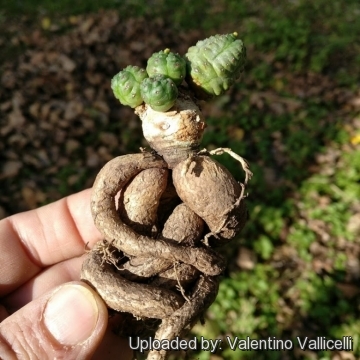 Euphorbia pseudoglobosa Photo by: Valentino Vallicelli
Euphorbia pseudoglobosa Photo by: Valentino VallicelliCultivation and Propagation: Euphorbia pseudoglobosaSN|14415]]SN|14415]] likes a sunny position. It does best in a mineral soil, good drainage is essential. Water sparingly during the summer months and keep dry in winter. It is a slow growing long lived plant and once established, it will be content in its position and with its soil for years. It can tolerate moderate shade, and a plant that has been growing in shade should be slowly hardened off before placing it in full sun as the plant will be severely scorched if moved too suddenly from shade into sun. Contrarily to Euphorbia globosaSN|15665]]SN|15665]], Euphorbia pseudoglobosaSN|14415]]SN|14415]] has a large tap root and requires a relatively deep pot. Sometimes needs pruning not to look like a mess.
Propagation: The plant can be reproduced by seeds sown during spring or summer, cuttings and division of larger clumps. If you remove an offset, remember to let it dry for a week or so, letting the wound heal (cuttings planted too soon easily rot before they can grow roots). It is better to wash the cut to remove the latex.
Warning: As with all other Euphorbias, when a plant gets damaged it exudes a thick white milky sap known as latex. This latex is poisonous and may irritate skin, so pay extreme attention not to get any in your eyes or mouth.
Cultivated plants must be handled carefully.
Your Photos
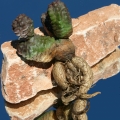
by Valentino Vallicelli



















